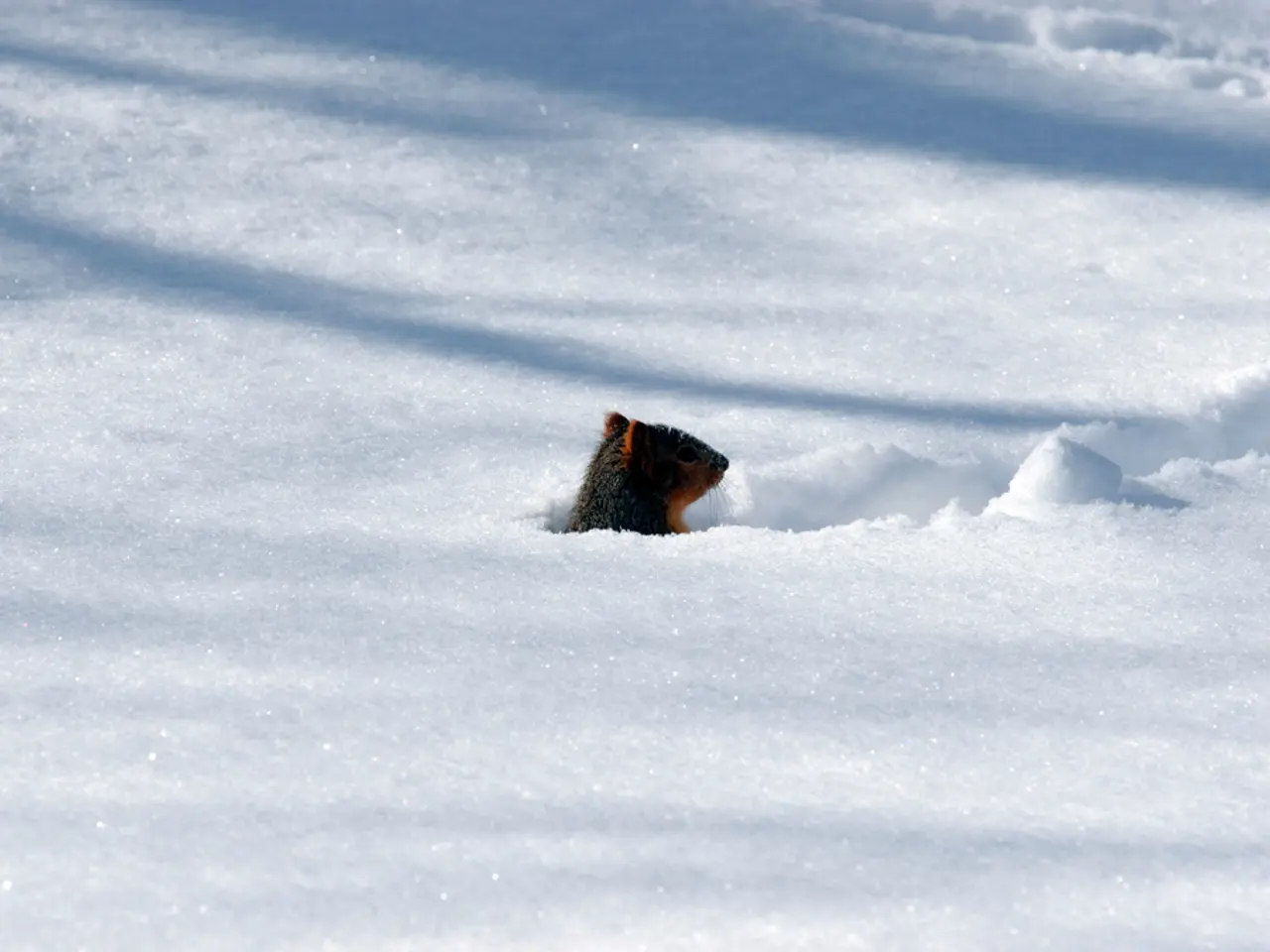Consuming Snow: Potential Health Risks?
In the midst of winter's frosty grip, the temptation to taste the pristine white snowflakes can be hard to resist. However, a word of caution is in order: eating snow can be safe or harmful, depending on the circumstances.
Certified physician assistant, Max Huddleston, advises that while snow can provide a temporary relief from thirst, it should not be relied upon as a primary source of hydration, especially in survival situations. This is because consuming large amounts of snow directly can significantly lower your body temperature due to its coldness, causing a chilling effect that can lead to hypothermia, which is dangerous, especially in cold environments[1][3].
When it comes to snow consumption, Huddleston advises against eating snow that has been disturbed, discolored, or from areas with potential contamination. This includes snow that has been shoveled, plowed, or walked on, as it may contain potential contaminants from oil or gas[4]. Furthermore, it's important to avoid the first layer of snow or the first few hours of snowfall, as it contains more toxins[6].
Snow isn't just pure frozen water; it collects bits of dust or pollen and gathers small chemical contaminants as it falls. Living in a big city increases the amount of contaminants in the air compared to a more rural area[7]. Therefore, considering where you live is crucial when deciding if it's safe to eat snow.
However, if you must consume snow for hydration, it is better to melt it first to avoid the chilling effect. And, ensuring the snow is clean and fresh-looking, ideally from a less polluted area, is essential[8].
Huddleston enjoys eating snow with his child when it meets the criteria of being undisturbed, pristine white, and from the top layer. Snowmen, snowballs, snow angels, snow forts, and snow as a culinary ingredient (like snow cones, hot cocoa, ice cream) are popular winter activities, but it's important to be aware of your surroundings and the potential contamination of snow in urban areas[9].
In summary, eating small amounts of clean snow occasionally is generally not harmful, but consuming large amounts can dangerously lower body temperature and should be avoided, especially in cold or survival situations[1][3]. Snow should also never be eaten if it appears dirty or contaminated, and care should be taken to avoid snow in hazardous avalanche environments for overall safety[2][5].
[1] Mayo Clinic. (2021). Hypothermia. https://www.mayoclinic.org/diseases-conditions/hypothermia/symptoms-causes/syc-20376303 [2] Avalanche.org. (n.d.). Avalanche Safety. https://www.avalanche.org/ [3] National Health Service. (2021). Hypothermia. https://www.nhs.uk/conditions/hypothermia/ [4] Cleveland Clinic. (2021). Eating Snow: Is it Safe? https://health.clevelandclinic.org/eating-snow-is-it-safe/ [5] American Red Cross. (2021). Prepare for Winter Storms. https://www.redcross.org/take-a-class/online-courses/prepare-for-winter-storms/ [6] National Park Service. (2021). Eating Snow. https://www.nps.gov/subjects/safety/eating-snow.htm [7] Environmental Protection Agency. (2021). Air Quality in Urban Areas. https://www.epa.gov/air-quality-urban-areas [8] Centers for Disease Control and Prevention. (2021). Safe Water in an Emergency. https://www.cdc.gov/disasters/hurricanes/water-quality.html [9] National Oceanic and Atmospheric Administration. (2021). Winter Weather. https://www.weather.gov/safety/winter-activities
- In the realm of health-and-wellness, Max Huddleston, a certified physician assistant, suggests avoiding snow as a primary source of hydration, especially in survival situations, due to potential risks from contamination and the chilling effect it can have on the body.
- Nutrition-wise, snow isn't simply pure frozen water; it collects bits of dust, pollen, and small chemical contaminants as it falls, with living in urban areas increasing the risk of consumption of these contaminants.
- In the food-and-drink aspect of a balanced lifestyle, if consumption of snow is necessary for hydration, it is better to melt it first to avoid the chilling effect, and to ensure the snow is clean and fresh-looking, ideally from a less polluted area.




